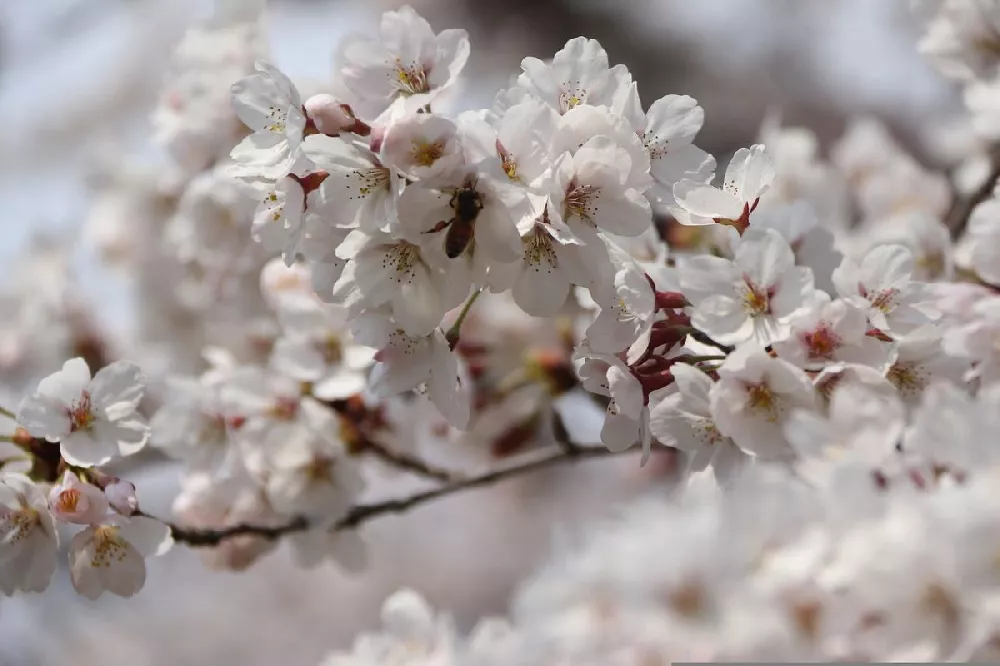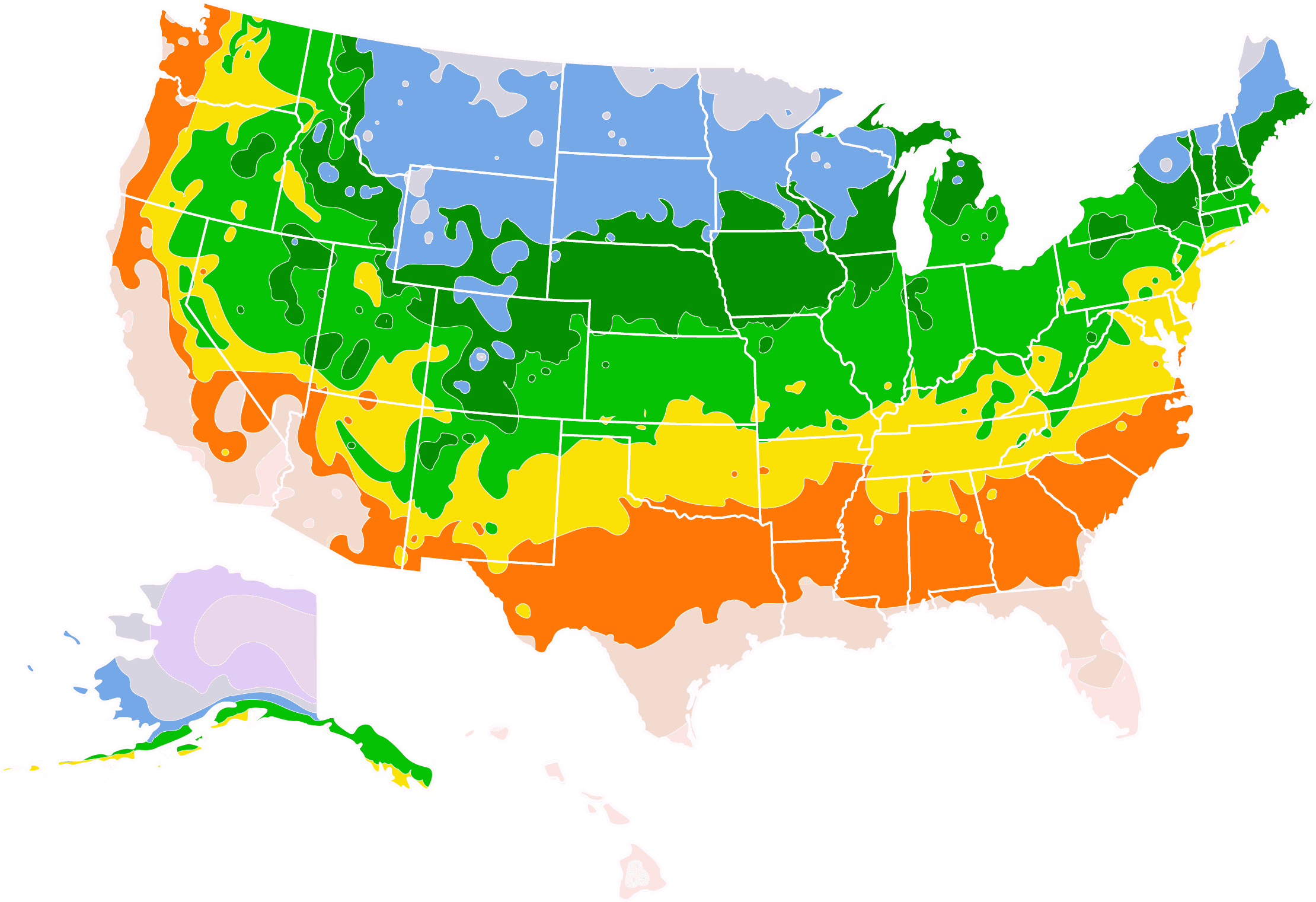- Home >
- Cherry Trees >
- Autumn Cherry Tree
Autumn Cherry Tree for Sale - Buying & Growing Guide
Very few plants can enhance the beauty of your garden as drastically as the autumn cherry tree. Unlike other cherry trees, the cultivar known as Prunus subhirtella 'Autumnalis' holds many semi-double flowers that bloom during both spring and fall. Those flowers often emerge as dark pink before fading to light pink and white as they open. The autumn cherry tree is also easy to care for as it will exhibit fast and healthy growth while also adapting well to colder climates like USDA hardiness zone 4 and tolerating significant droughts.
- The flowers hold many colorful petals and bloom twice per year.
- The autumn cherry tree is drought-tolerant and quite hardy.
- This tree shows fast growth and a round canopy.
Enter your zip code to find nearby stores that may carry this plant.
Plant Care
Sunlight

The Autumn Cherry Tree will survive in full sunlight and partial shade.
Watering
Water established trees about once every week or once every other week.
Fertilizing

Optionally use a balanced fertilizer once per year in early spring.
Planting and Care
Planting instructions
The best soil for an autumn cherry tree is relatively moist but well-draining and slightly acidic. Despite that being the ideal, this tree can adapt to many different soil types, which makes it easy to maintain. Autumn cherry trees can also adapt to both full sunlight and partial shade settings. To plant this tree, dig a hole that is about as deep as the root ball is tall and at least twice as wide. After backfilling the hole, add a layer of organic mulch above the planting area.
Watering and nutrients
One major advantage of the autumn cherry tree is that it is a drought-tolerant plant. However, while this plant can go for a while without water, it is better to maintain a regular watering schedule. Typically, this plant will perform best when it receives water about once per week or once every two weeks during spring, summer, and fall. Fertilization is optional for this plant as it will grow quickly on its own. If you choose to feed it, use a balanced fertilizer in the early spring.
Pollination
Pollination is not a common concern for those who grow the autumn cherry tree. This plant is mainly valuable for its ornamental appeal, as its fruits are small and too sour to be enjoyable. To produce those fruits, the autumn cherry tree relies on bees and other insects to perform pollination. Birds often benefit most from autumn cherry tree pollination as they are far more likely to enjoy eating this tree’s fruits than humans are.
Pruning
The autumn cherry tree will usually grow with a pleasantly rounded canopy all by itself. Any pruning you do can be light and should serve one of two main purposes. First, you should remove any spent flowers from this tree during the bloom period to encourage more future blooms. Second, during winter you should identify and remove any parts of the plant that are dead, damaged or diseased to maintain your plant’s health. In both instances, you should use sharp and sterile pruning tools without exception.
Pests, diseases and animals
Ornamental cherry trees, including the autumn cherry tree, can be quite vulnerable to several types of disease. Some of the most common infections this plant may experience include rot, black knot, canker, powdery mildew and cherry leaf spot. Many of these common diseases will arise when your tree experiences excess moisture or if you fail to prune it often enough. Pests can also be an issue for your autumn cherry tree. Spider mites, Japanese beetles, aphids and borers are among the many insects that can harm this plant.
Achieving maximum results
The autumn cherry tree is a plant that you will need to give plenty of space. While other ornamental cherry trees are quite small, this variety can take up a lot of space in just a few growing seasons. Also, if you are interested in maximizing the quality of your plant’s flowers, you should choose a full-sun location over one with partial shade. Even though this plant can survive in both settings, full sun consistently makes for the best ornamental qualities.
FAQs
Are the fruits of an autumn cherry tree edible?
Technically speaking, the fruits of the autumn cherry tree are edible, but they are not enjoyable to eat. The autumn cherry tree is one of many blossoming cherry tree cultivars that were bred specifically to enhance flower characteristics. The focus on creating the best flowers caused these trees to develop fruits that are quite small and very sour. As such, people don't grow the autumn cherry tree with the goal of harvest.
How fast does the autumn cherry tree grow?
The autumn cherry tree is a fast-growing tree that will add about 2 feet of new growth each year when conditions are right. This plant usually maintains that rapid growth rate regardless of whether you provide fertilizer each year. At that rate, the autumn cherry tree reaches a mature size of around 30 feet tall and wide in a relatively short time.
What is the parent species of the autumn cherry tree?
The parent species of the autumn cherry tree is the higan cherry tree, which is a naturally occurring hybrid species that can go by the botanical name Prunus subhirtella or Prunus x subhirtella. The noteworthy feature of this parent plant is that it blooms in spring and can provide some additional flowers later in the season. The cultivar we call the autumn cherry tree emphasizes that characteristic by providing significant blooms in both spring and fall.
You can't add more Product Name - Product size to the cart.
OK



